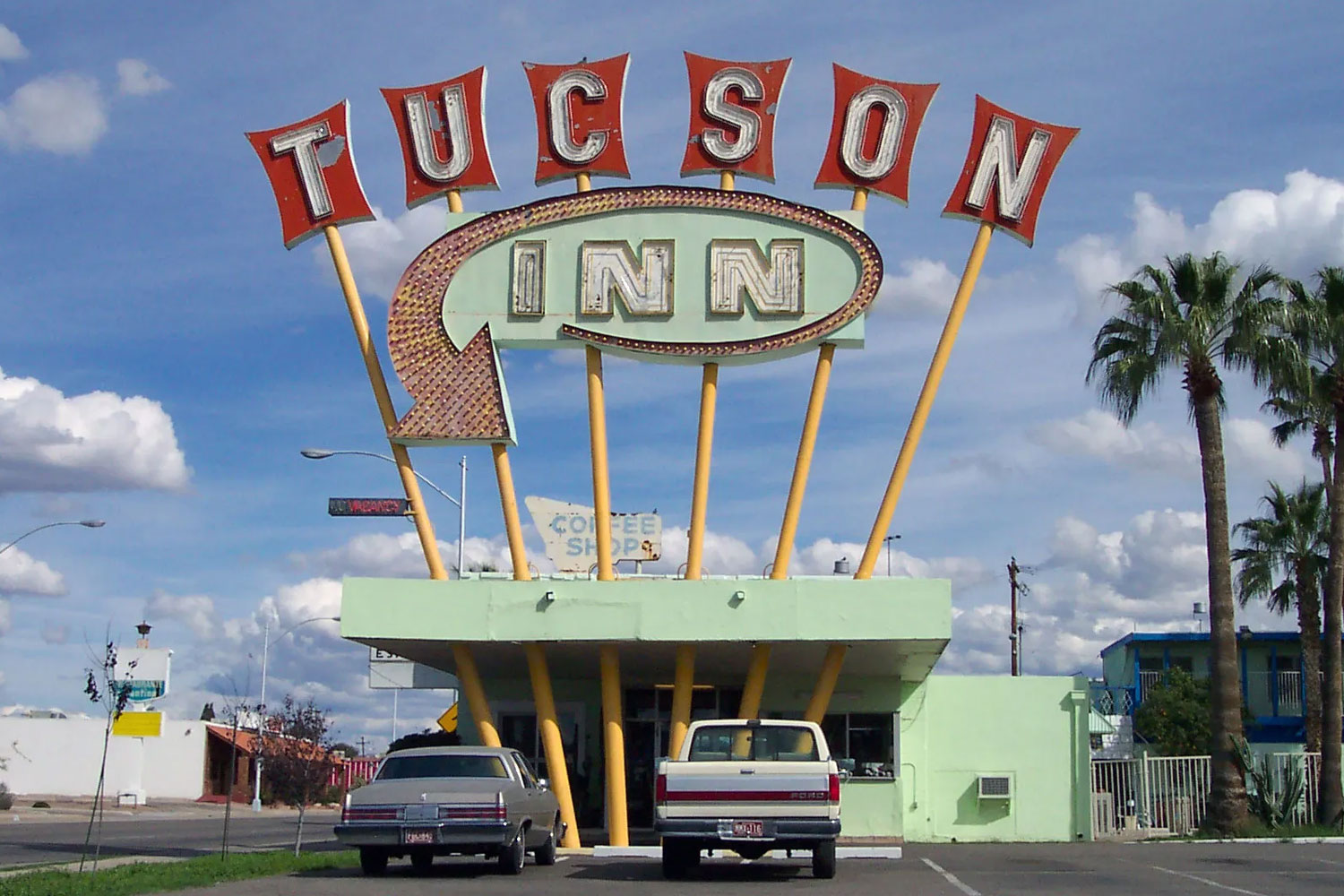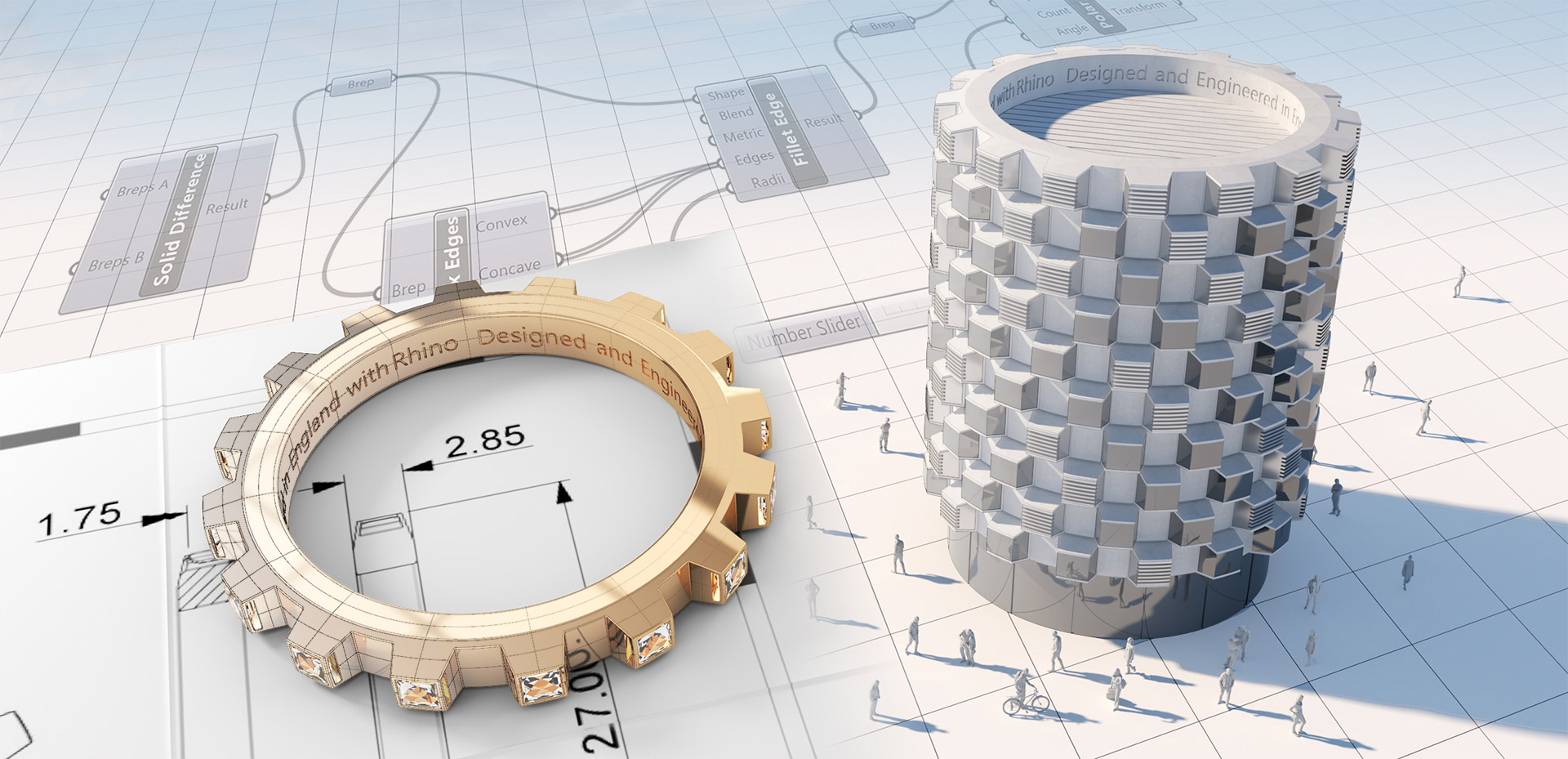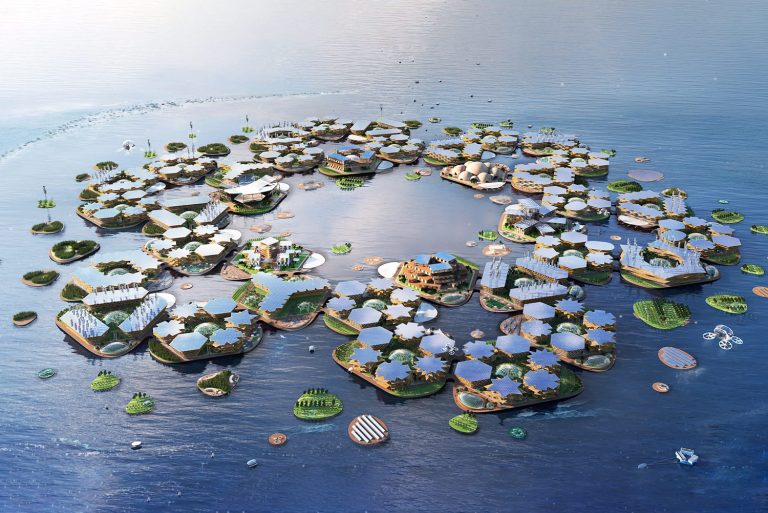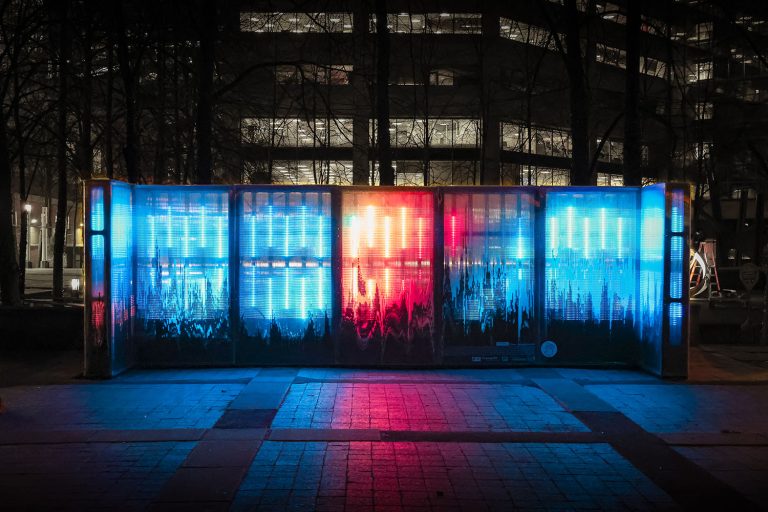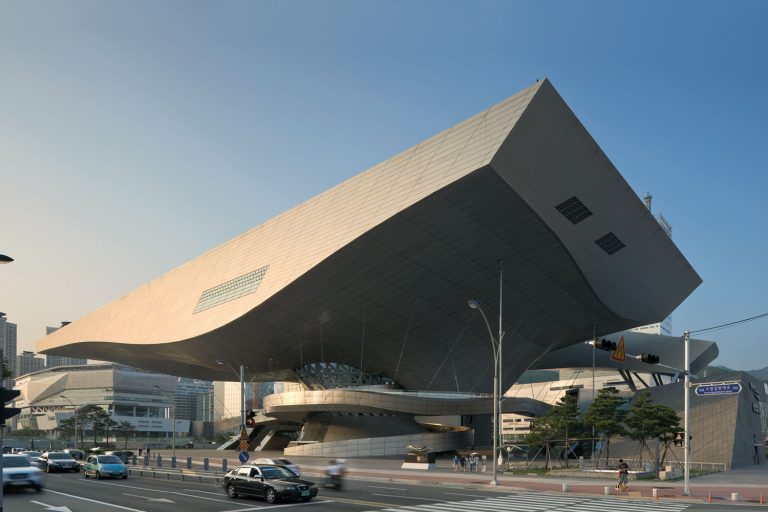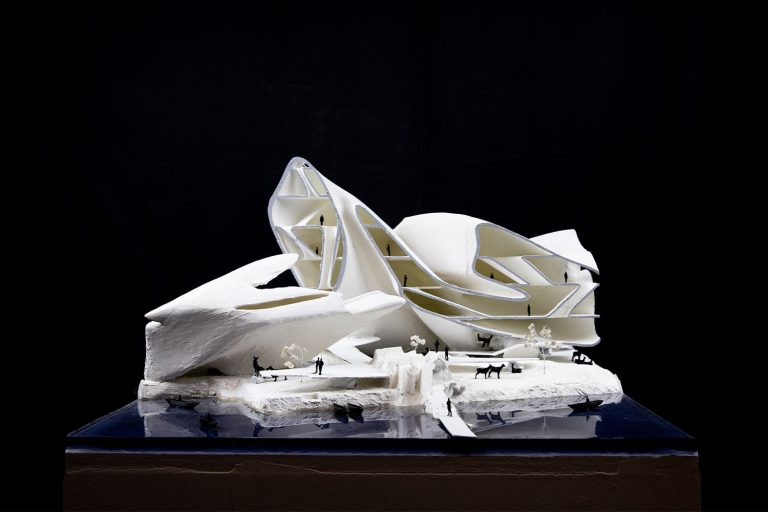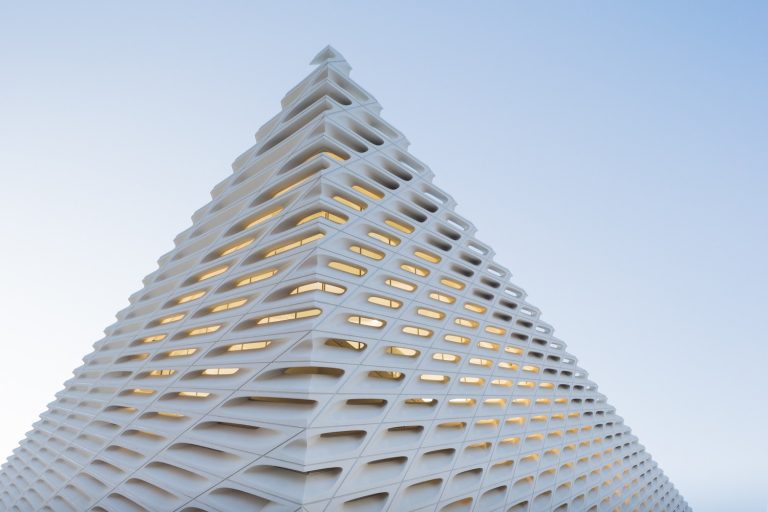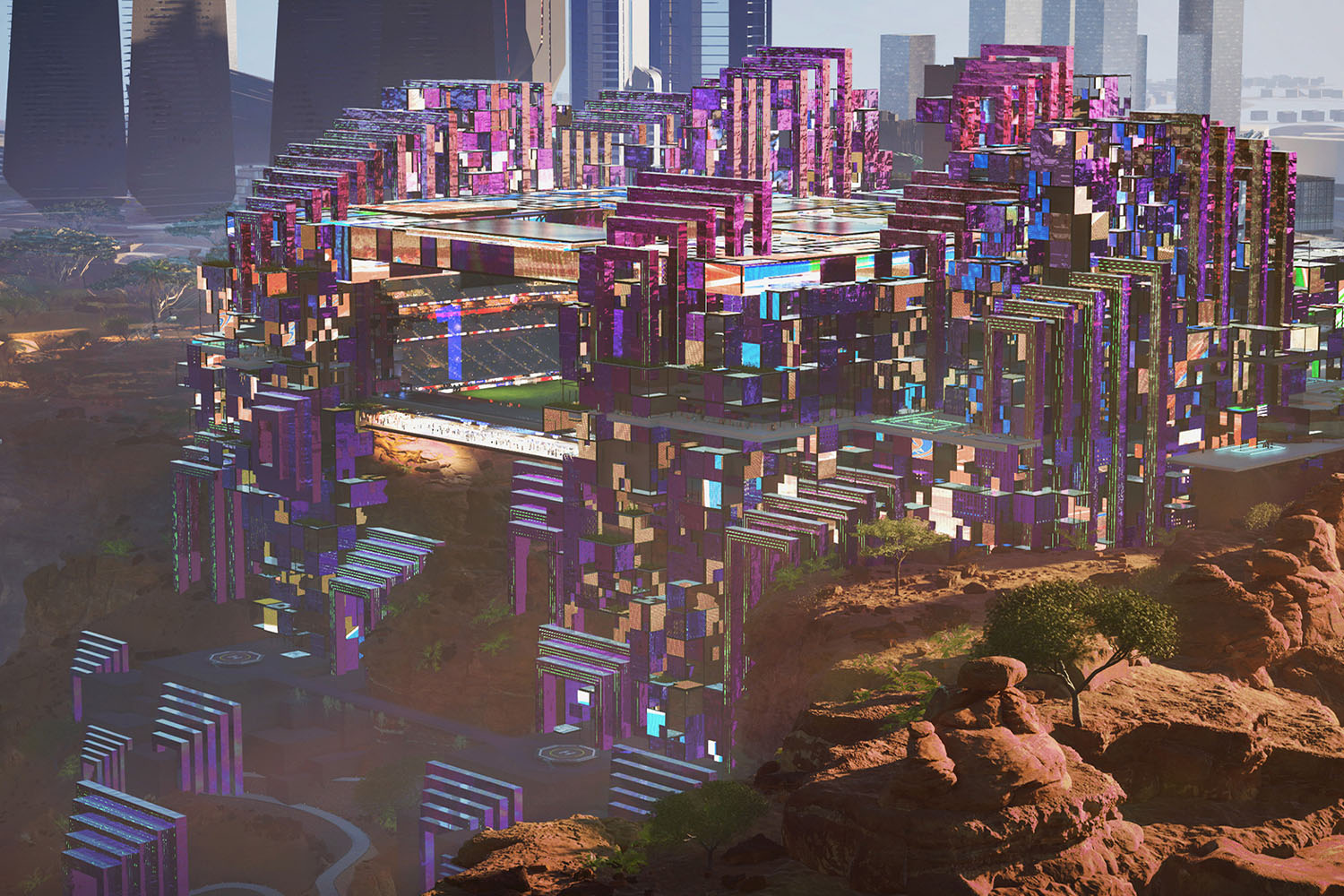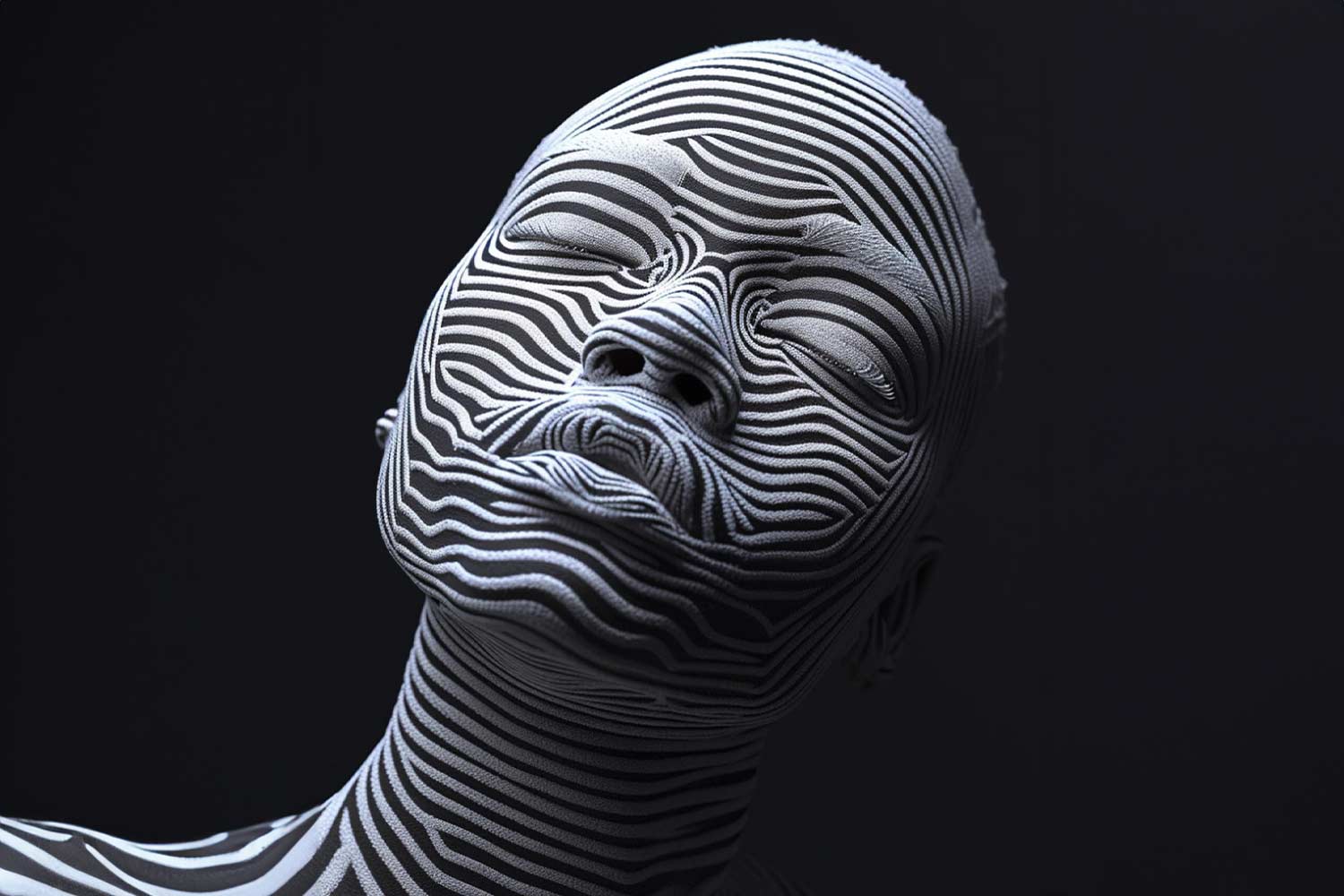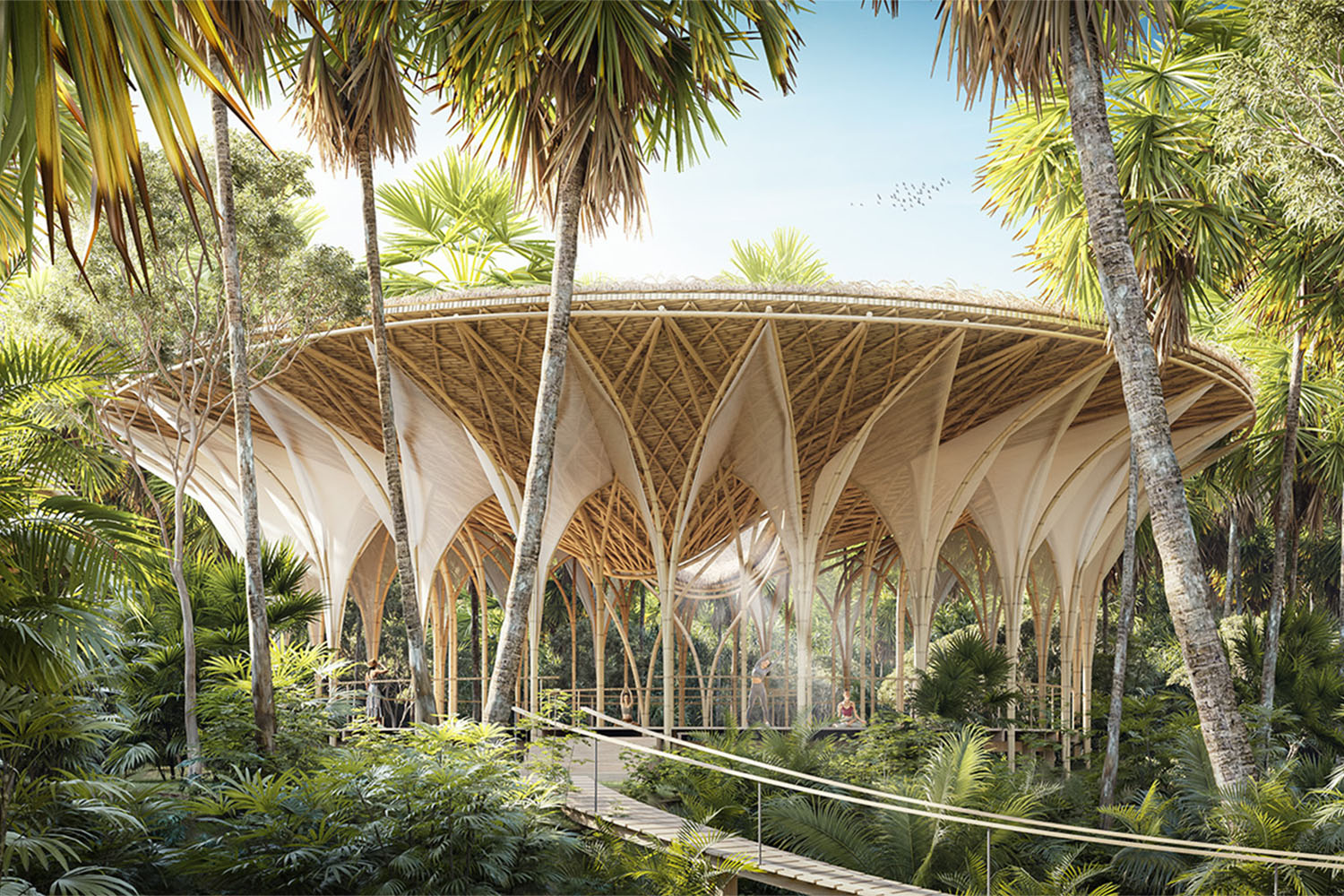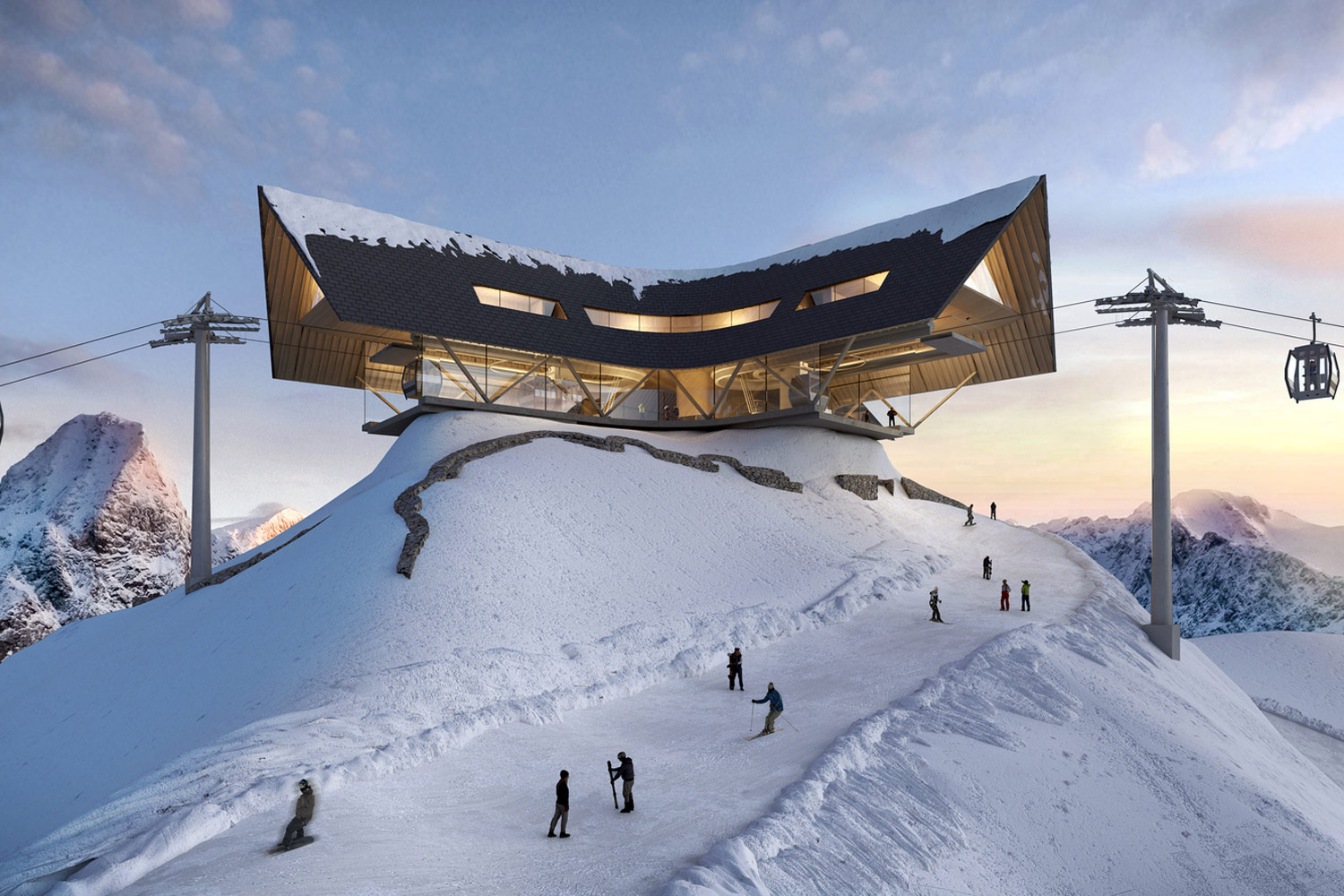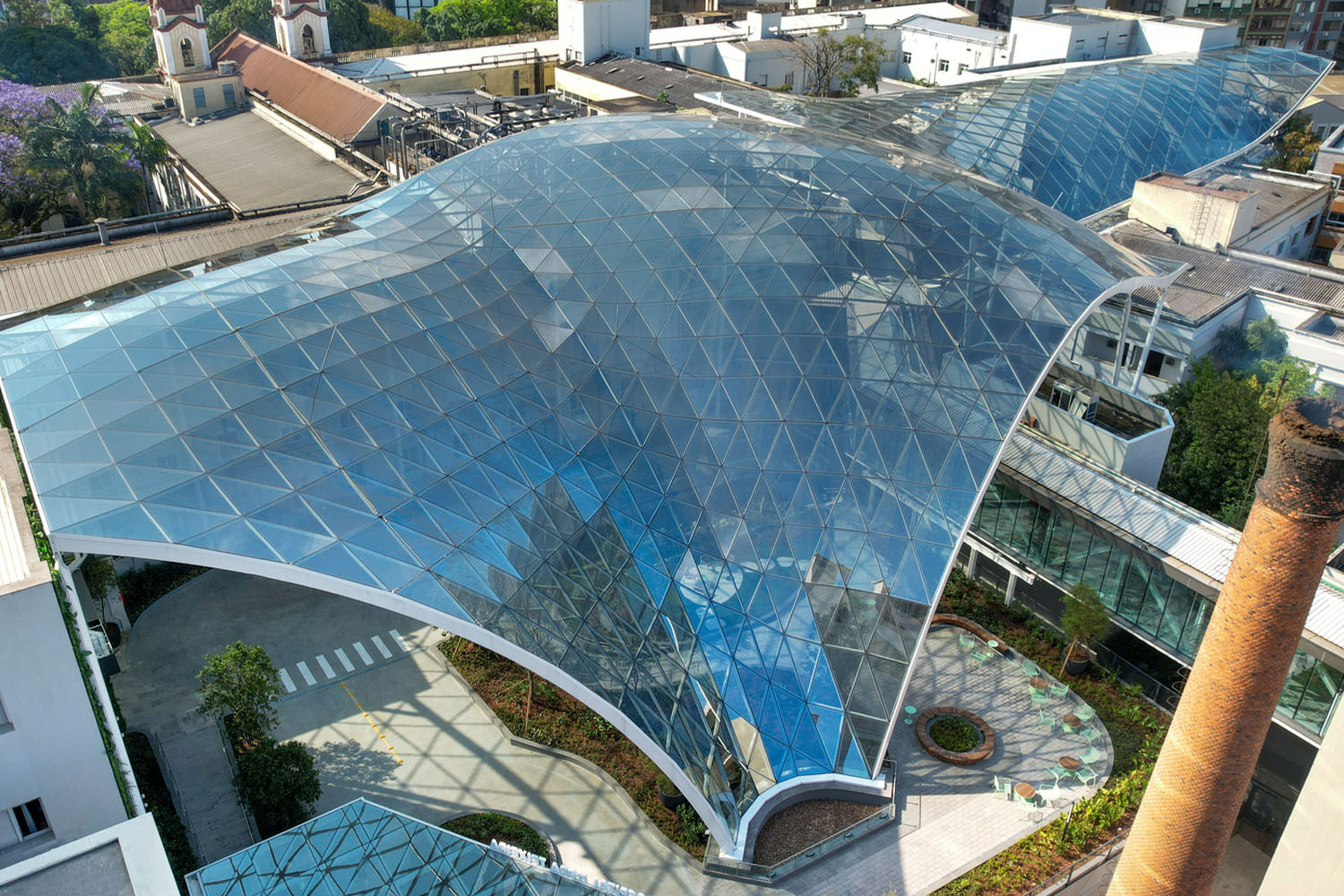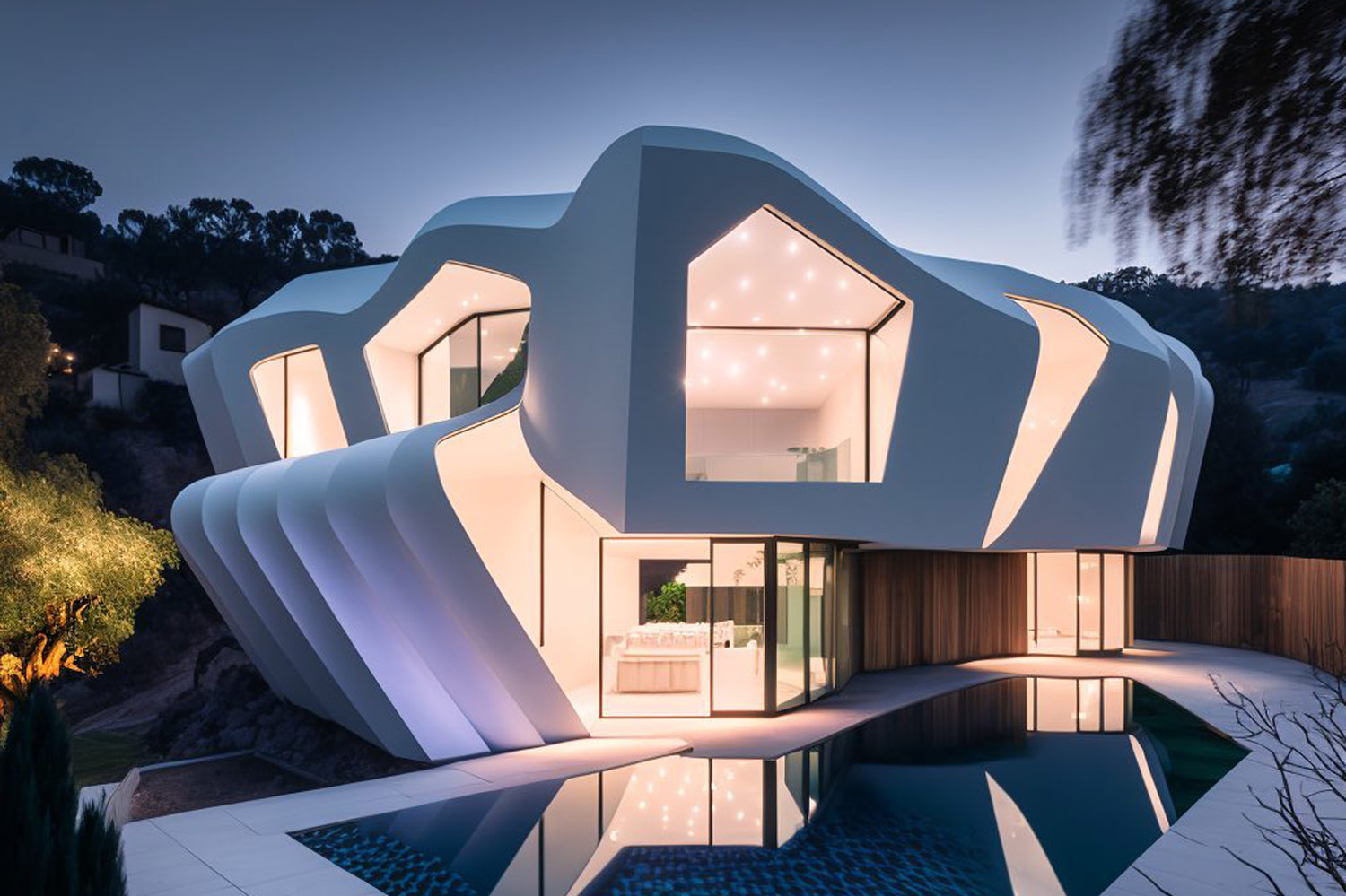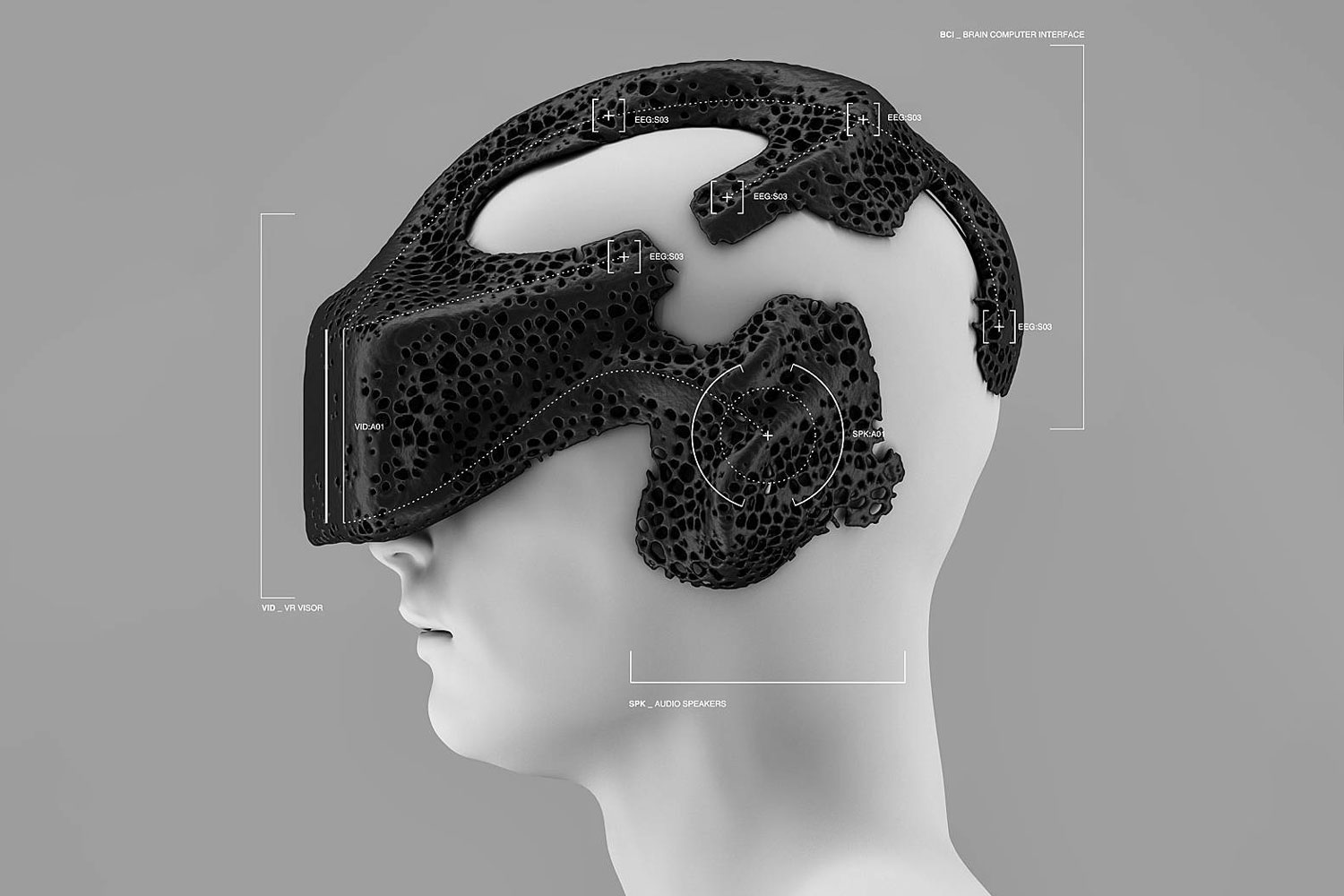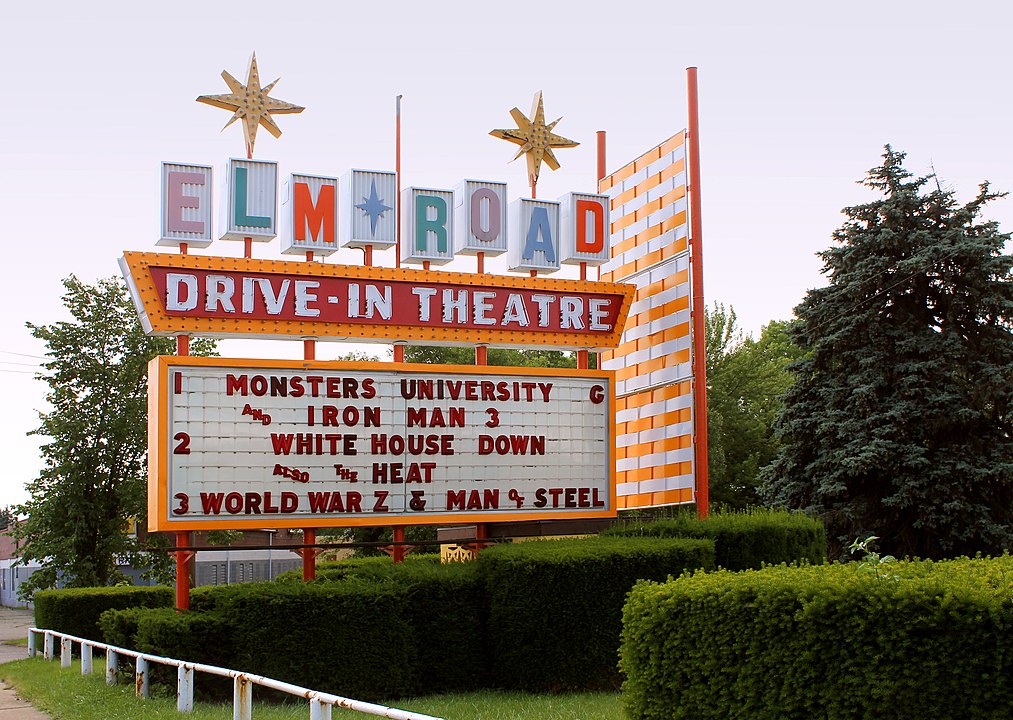
Googie can be defined as a futuristic style of architectural design, which was born in the 1930s and stayed popular roughly between 1945 and 1970. Its popularity was mainly in the United States, particularly in Los Angeles and the surrounding suburbs in Southern California. Googie-style buildings are mostly known for their distinguished geometric shapes, upswept roofs, dynamic appearance, and combination of different materials. These distinguished buildings were mostly popular amongst functions such as restaurants, car washes, bowling alleys, gas stations, drive-in theaters, apartment buildings, and occasionally single-family homes.
This futuristic architecture movement is influenced by car culture, jets, the Atomic Age, and the Space Age. Therefore it carries various elements that are characterized by them. For example, shapes of boomerangs, flying saucers, diagrammatic atoms and parabolas, and free-form designs emerged with the bold use of glass, steel, and neon. Also, similar styles were referred to as Populuxe or Doo Wop. They embraced the futurism of the atomic age and conveyed a unique design perspective with optimism. Although the Googie style became less valued over time and most of the examples have been demolished, the remaining distinctive buildings can be cherished as architectural landmarks.
Starting from its brief history and main characteristics, here is a list of six buildings with a Googie architectural style.
Brief History of Googie Architecture
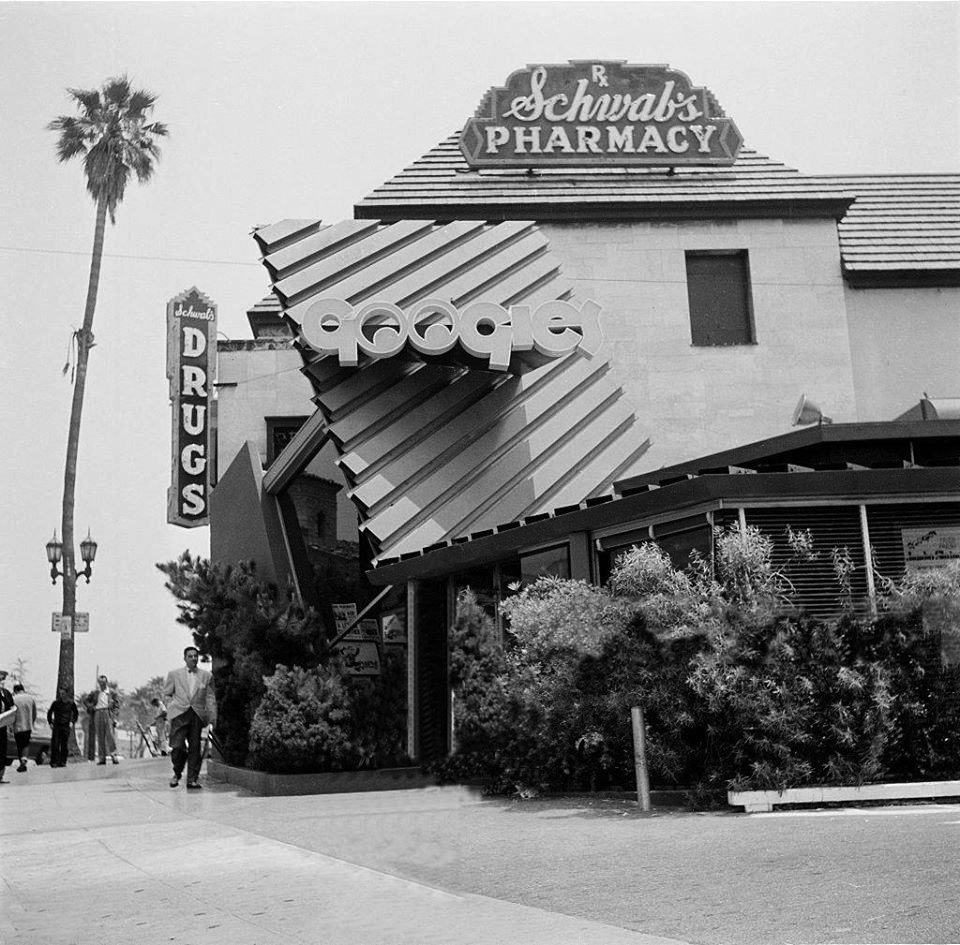
First of all, the name Googie was derived from a coffee shop named Googies in LA, designed by the architect John Lautner in 1949. But before the name, the style started to emerge in the 1930s with the increasing popularity of cars and cities spreading to suburbs. Alan Hess, an architect and an author, writes about this subject in Googie: UltraModern RoadSide Architecture that mobility in Los Angeles during the 1930s was characterized by the initial influx of the automobile and the service industry that evolved to cater to it. The same businesses as the cities, but accessible for cars, started to emerge on suburbs and the roads through the suburbs. As expressed by Hess, this new emergence and trend led architects and designers to develop distinctive buildings that are attractive and recognizable from the road by customers. This approach also led to various distinctive road signs with bold neon letters for drive-in businesses.
It is not clear which of the buildings is the first example of Googie architecture, but some candidates are Bob’s Big Boy in the Los Angeles suburb of Burbank, designed by Wayne McAllister and built-in 1949, Johnnie’s Coffee Shop on L.A.’s Miracle Mile and Norm’s Restaurant on La Cienega, were both designed by Helen Liu Fong and built around the same time. The pioneer architects of the period can be counted as John Lautner, Douglas Honnold, Eldon Davis, and Louis Armet.
Progress in spaceflight has an important effect on this futuristic style, Googie architecture. Between the 1950s and 1970s, space travel became a popular subject and a reality for the first time in history. With the Sputnik I and Apollo missions, the space age and Googie architecture seemed to reach its peak. From its peak, Googie architecture started to become unpopular, and most of its examples started to be demolished over time. However, the remaining ones are now considered retro-futuristic examples and some of them are under legal preservation.
Key Characteristics of Googie Architecture
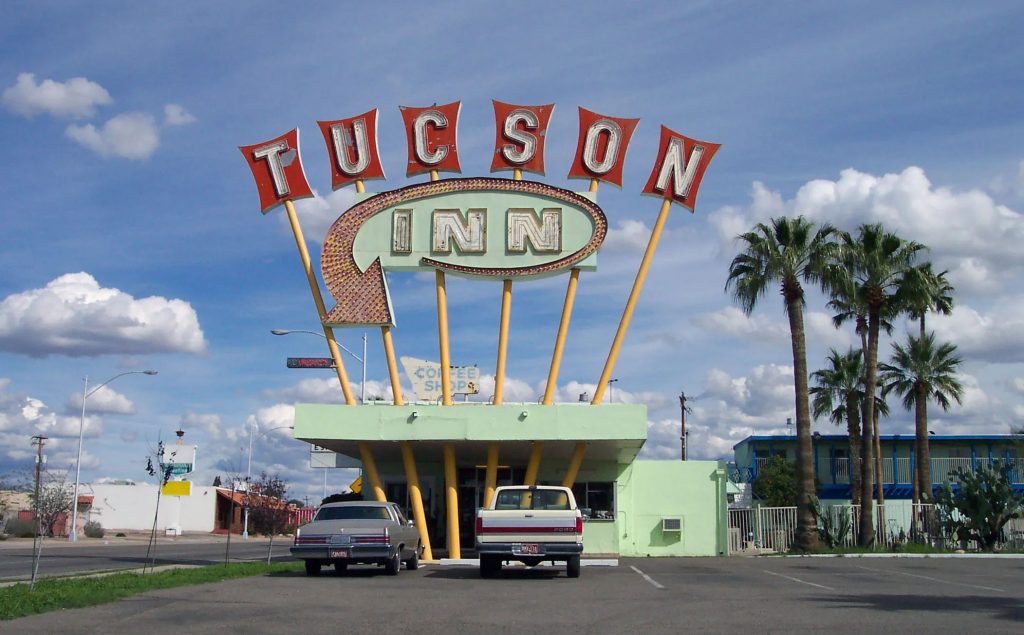
With its futuristic signatures, Googie architecture is a distinguished style around its surrounding buildings. It has a unique and challenging engineering and architectural approach in its time, the mid-twentieth century. The bold and attractive design elements are the most common way to express the signatures of the style, but here is a listed version of some key characteristics of the Googie architecture;
- Bold geometric shapes and colors, edgy endings, lots of curves
- Upward-angled roofs, boomerang-shaped pillars
- Starbursts
- Neon signs, illuminations
- A mixture of distinctive materials
- Cantilevered roofs
- Space age-referenced imagery
1. The Theme Building at LAX
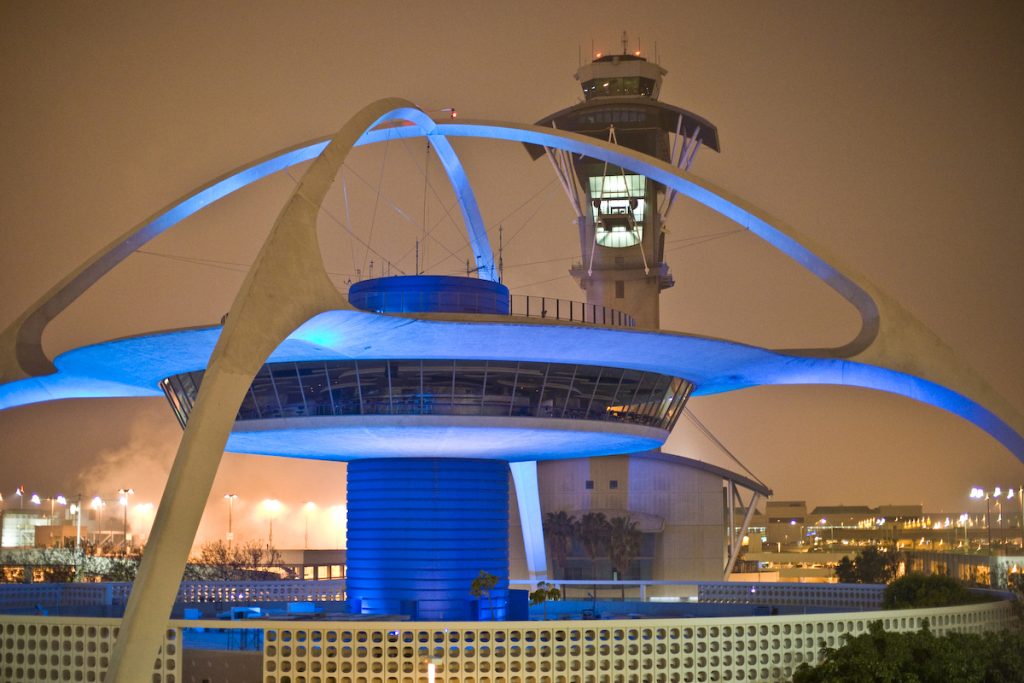
Built: 1961
Architects: Pereira & Luckman Architects, Paul Williams and Welton Becket
Location: Los Angeles, California, United States
The Theme Building at Los Angeles International Airport is one of the most known iconic landmarks of futuristic architecture. It was designed as part of a major postwar expansion of the airport. The building resembles a landing spaceship on its four legs. Due to hollow steel trusses covered in stucco and perched atop four legs of steel-reinforced concrete 15 feet above the ground, the building’s distinctive crossed arches appear as homogeneous structures. The construction was completed in 1961 and the building did not end up like most Googie architecture-style buildings over time, as most of them had been demolished after the futuristic style lost its peak period. In 1993, The Los Angeles City Council designated the building as a historical-cultural monument.
The building included an Observation Level with a 360-degree view of approaching and departing aircraft and the Encounter Restaurant. Before the Encounter Restaurant opened there in 1997, a $4 million refurbishment was finished, with an electric lighting design and retro-futuristic decor by Walt Disney Imagineering. The Observation Level was shut down due to security concerns following the attacks on September 11, 2001, and reopened in 2010 after a $12.3 million structure renovation was finished. Although the building’s observation level is still open on weekends, The Encounter Restaurant stopped taking reservations in December 2013 and has no plans to return. After the closing of the restaurant, it can be said that the building is now acting as an architectural monument for visitors.
2. The Oldest McDonald’s
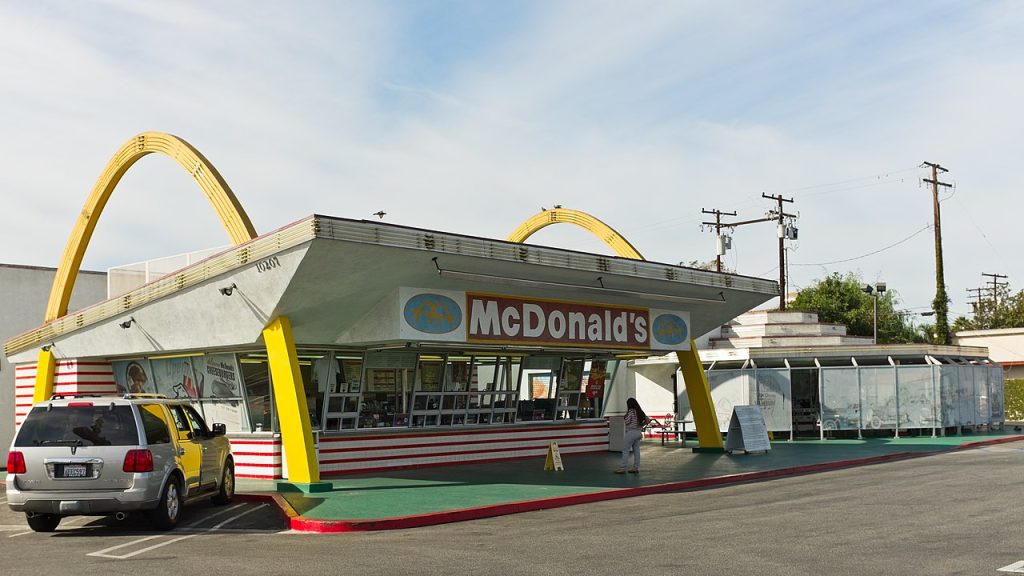
Built: 1953
Architect: Stanley Clark Meston
Location: Downey, California, United States
McDonald’s was one of the early adopters of Googie architecture. After several years in the restaurant industry, the McDonald brothers created the “Speedee Service System” to automate and enhance food production at their drive-in restaurant. They commissioned Stanley Clark Meston, an architect who specialized in auto showrooms, to design the first McDonald’s building in Downey that could be replicated by franchisees. The construction was completed in 1953 and received official recognition as a historic resource in 1984.
The most distinctive Googie element of this building is the 30-foot-high, now-famous “golden arches” that pierced the roof of the restaurant. The McDonald brothers wanted customers to see the operations and preparation methods from all angles. Therefore, the kitchen is surrounded by canted plate glass. The iconic building became one of the landmarks of Googie architecture and McDonald’s. It was restored and reopened with a celebration in 1996, and the drive-in restaurant still continues its popularity today.
3. TWA Flight Center
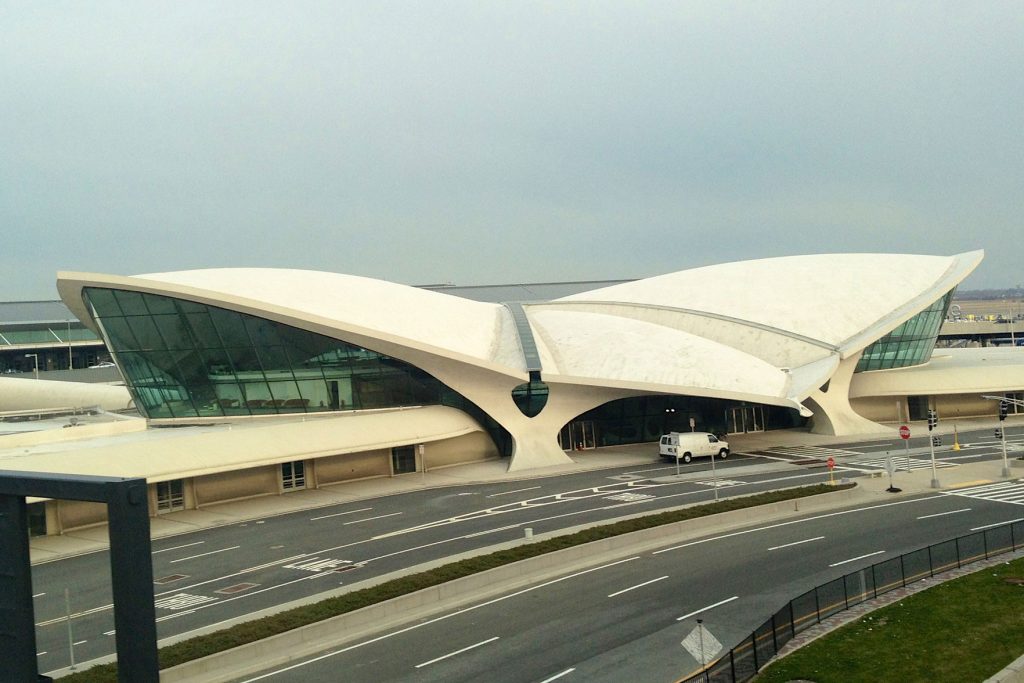
Built: 1962
Architect: Eero Saarinen and Associates
Location: John F. Kennedy International Airport, New York City, United States
The TWA flight center is one of the iconic examples of the futuristic style, Googie architecture, with both exterior and interior design elements. It is an airport terminal and a hotel at JFK International Airport Terminal 5. The original terminal was constructed between 1959 and 1962 and has two tube-shaped departure-arrival halls, a distinctive wing-shaped roof supported by “Y”-shaped piers, and an open interior with towering windows. The head house survived despite being partially demolished and was transformed into the TWA Hotel in 2019. Between 2005 and 2008, the encircling Terminal 5 was designed by Gensler and constructed. The new addition included 26 active gates and various dining shopping options.
The TWA Flight Center’s shape is influenced by its distinctive setting, which has angled walkways and gates. Currently, the JetBlue terminal and the TWA Hotel complex are situated east of the original head house and have an entry hall with a crescent form around it. The passenger tubes have been kept in a place where the original gate buildings were demolished. The two-story structure with its distinctive two upward-slanting shell concrete roof look from the outside continues its futuristic look also with the interior atmosphere. The interior design with curves and organic shapes helps to continue the Googie vibe. A central staircase or four lateral staircases can be used to access the intermediate level of the building. Ceramic tile covered the walls and floors, and the structure was outfitted with cutting-edge equipment like closed-circuit television, a public address system, baggage carousels, and split-flap display boards.
4. Union 76 Station
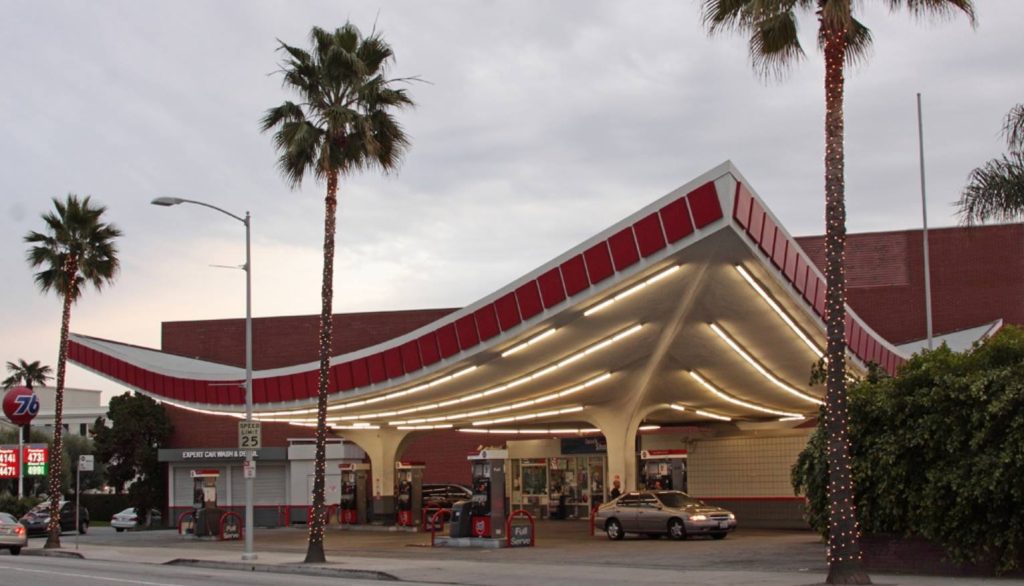
Built: 1965
Architects: Gin Wong, William Pereira & Associates
Location: Beverly Hills, California, United States
The Union 76 station at the corner of Crescent Drive and Little Santa Monica Boulevard in Beverly Hills is one of the most known Googie architecture examples. The design of the building was originally completed in 1960 for the LAX and would complement the Theme Building. After that did not happen, the building was constructed at Beverly Hills as a gas station. Googie as a distinguished style for roadside buildings to catch the attention of passing motorists, worked in this case. According to the staff report, the gas sales have increased after the official opening of this distinctive gas station.
The common element of gas stations, a canopy, has a unique appearance in this building. The swooping, curved canopy of the Union 76 station is reminiscent of a giant parabolic spaceship. These strong, bold, angular rooflines are also one of the key characteristics of Googie architecture. The station was given landmark status by the Beverly Hill City Council in 2018 and still continues its service life today.
5. Space Needle
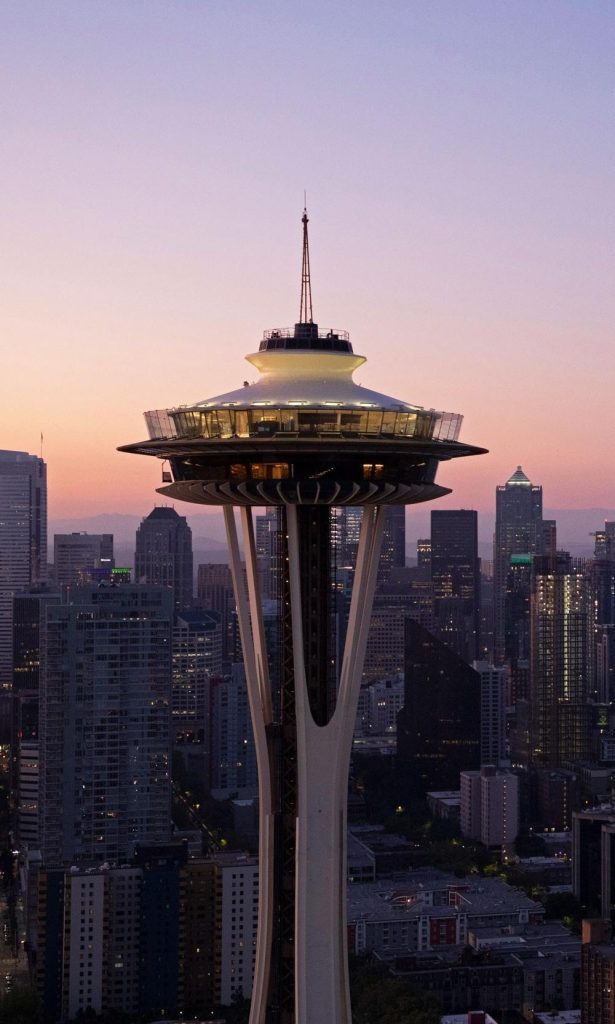
Built: 1961
Architects: John Graham & Associates
Location: Seattle, Washington, United States
The Space Needle is an observation tower and a landmark located in Seattle, Washington, built for the 1962 World’s Fair. It is an 184-meter-high, 42-meter-wide tower, and it weighs 9,550 tons. Inspired by the Stuttgart Tower, the artist Edward E. Carlson created a concept design for the World’s Fair’s dominating center tower. His earliest drawings included one that looked like a balloon that was being tied and another that was a balloon-shaped house on a central column supported by wires. Carlson and architect John Graham, who transformed the balloon idea into a flying saucer, ultimately compromised on the futuristic look. The tower’s hourglass profile was first introduced by Victor Steinbrueck.
The observation tower also includes the SkyCity, a revolving restaurant, at the 150th meter. The tower was completed in about 400 hundred days and opened on the first day of the World’s Fair in 1962. It instantly became an icon for Seattle, and it is a major tourist attraction till then. In 1999, it was registered as an official landmark of Seattle. In 2000, it went through a big renovation that included a complete redevelopment of the restaurant and top levels. The Space Needle has also made appearances in popular culture productions, such as Sleepless in Seattle, The Parallax View, Frasier, and Grey’s Anatomy.
6. Pann’s Coffee Shop
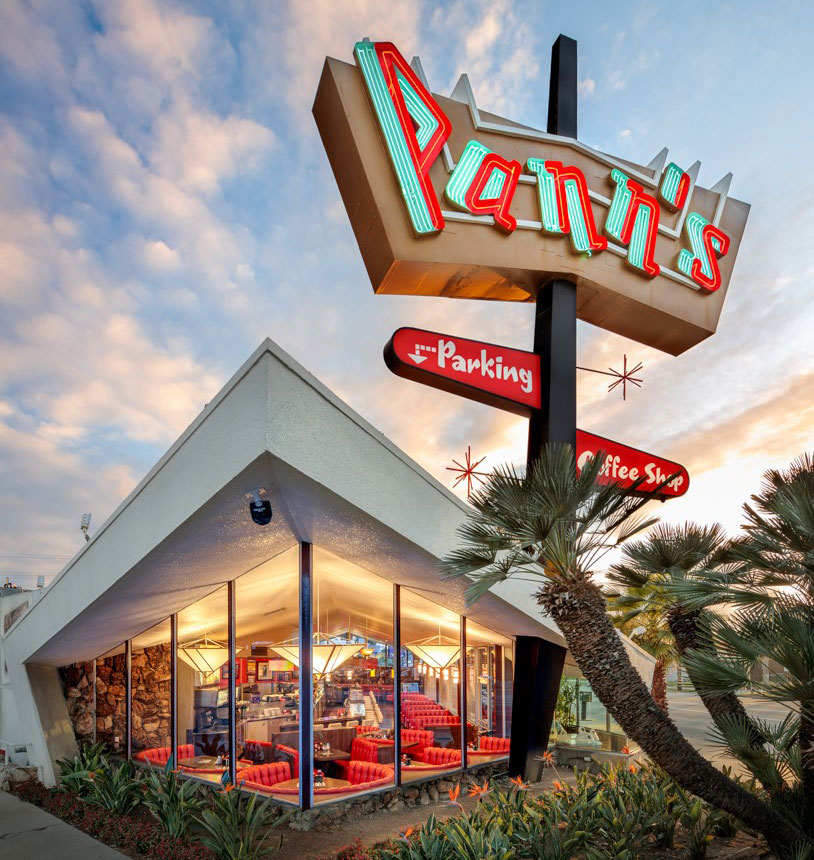
Built: 1958
Architects: Helen Fong, Armet & Davis
Location: Los Angeles, California, United States
Pann’s Coffee Shop is considered one of the best preserved Googie architecture examples in the city. The structure was created by the renowned Armet and Davis architecture firm in Southern California, specifically by Helen Liu Fong. It was finished in 1958. The company was founded in 1947 by Louis Armet and Eldon Davis, and it is credited with designing thousands of Googie-style buildings, including national chains like Denny’s and Bob’s Big Boy.
Pann’s includes a distinctive angular, multi-colored rock roof and is characterized by an abstract geometric shape. Floor-to-ceiling glass panels supported by thin, vertical steel windows can be seen on the building’s main face, while fieldstone is used to finish the side elevations, which can also be seen inside. Besides the building’s unique look, its neon pole sign with the diner’s name inscribed on it sticking out of the roof at an angle is another attractive feature of the Pann’s. Its futuristic Googie style with 1950s aesthetic interior creates an experience for the customers. Alan Hess writes in Googie: Fifties Coffee Shop Architecture that “these were places where George Jetson and Fred Flintstone could meet over a cup of coffee.”
Bonus: “Welcome to Fabulous Las Vegas” Sign
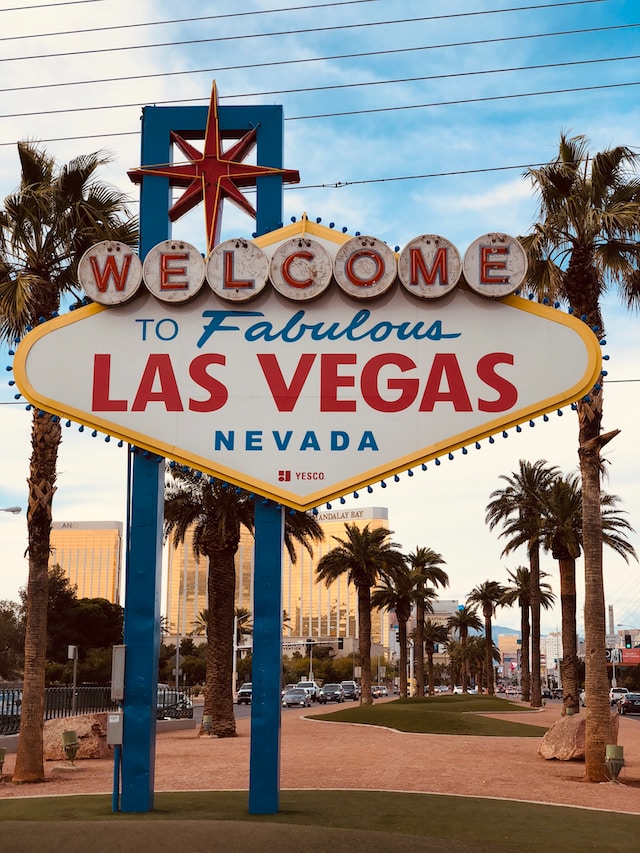
Built: 1959
Designer: Betty Willis
Location: Las Vegas, Nevada, United States
The list would be incomplete without the famous sign: Welcome to Fabulous Las Vegas. The iconic sign is another example of the Googie style. The curved edges, neons, illuminations, starbursts, and bold letters create a distinctive and attractive sign design that holds the characteristics of Googie.


